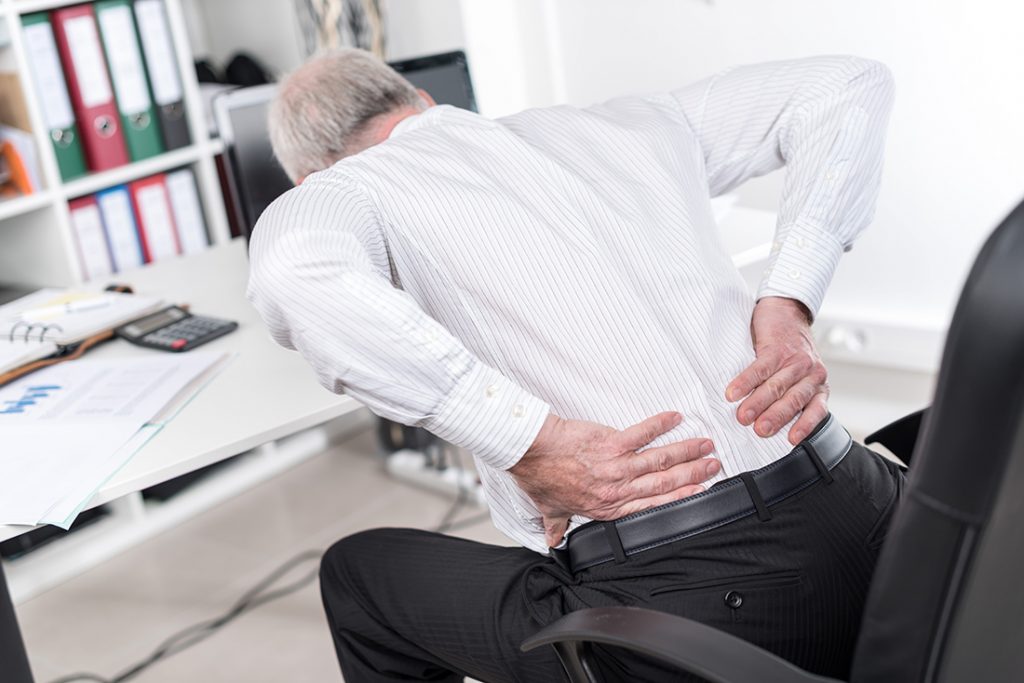
EXPLORE
The Best Remedy for an Aching Back: Prevention
An ounce of attention to how you’re moving is better than a pound of pain pills
“Sorry, I can’t meet you for lunch today after all. I threw out my back again, and I can’t get there unless you come pick me up in a wheelbarrow.”
How often do you hear – or say – something along these lines? Back problems seem endemic to the Western way of life. An estimated 80 percent of all Americans will experience low back pain at some point in their lives. But I’m convinced that in many cases, the suffering is completely avoidable.
When I say many back problems are preventable, I’m not talking about the kind of chronic or severe back pain that’s due to structural or mechanical problems of the spine. If you’ve got a bad back because of injuries, worsening arthritis, or conditions such as degeneration of the discs between the vertebrae, you need all that medical science has to offer.
What I’m talking about are episodes of garden-variety back pain—the kind that goes away after some days or weeks, but can be miserable and disruptive in the meantime. Nobody’s saying that you can prevent every fall or minor accident that might leave you clutching your back in pain. What you can do, however, is learn how to avoid dysfunctional or distracted movements that put your back at risk.
“An estimated 80 percent of all Americans will experience low back pain at some point in their lives.”
Here are few tips gleaned from knowledgeable body workers and hard experience:
Bend from your hips – never your waist. Your lower back is designed for stability, not mobility, and certainly not for the awkward, bent-over angles we sometimes put ourselves in. The key is to always keep your back straight (while maintaining its slight lumbar curve). You can do that by bending from the hip joints, where your body is designed to hinge. Alternatively, lower your body by bending at the knees, squatting, or kneeling. Even if it feels harder than bending at the waist, it’s much easier on your back.
Avoid leaning forward when standing for a period of time. For example, don’t lean over the sink when brushing your teeth or washing dishes. Bring your body or chair closer to what you’re doing, or bend your knees to get to the right level. Again, the goal is to keep your back straight at all times. The same holds true when you are sitting. Adjust your seat rather than bending over a meal or something you’re writing.
Think before you lift. This applies as much to a light package, a casserole from the oven, or a puppy, as it does to a heavy object. Position your body so the object is right in front of you and you are facing straight ahead, with your feet placed symmetrically. Then lift with both hands, keeping your elbows slightly bent and your wrists in neutral position, in line with your arms and hands.
Good technique is especially vital when you’re lifting something even moderately heavy. Stand up straight with the object right in front of you and as close to the center of your body as possible. Put one foot slightly behind the other for stability. Bend your knees to lower yourself to the object, keeping your back and neck in one straight line. Let your strong glute and leg muscles do most of the lifting, keeping your elbow slightly bent and the object close to you the whole time. Whenever possible, break a heavy load into smaller ones. Also, if you’re moving a heavy object, pushing it is easier on the back and neck than pulling it.
Reach slowly and deliberately. It’s all too easy to wrench your back with a sudden motion, especially if your body is twisting in the process. Don’t use an awkward turn of your torso to reach for something behind you or to the side; turn your whole body instead. Paying attention to the movement will also help you connect with the stronger muscles of your core, rather than reaching or lifting with your extremities.
Be mindful when doing chores. Getting distracted while doing household tasks can lead to unnatural moves—like, for example, stooping while reaching to vacuum under a coffee table. Been there, done that! Being attentive to how you’re moving will help you avoid any damage while practicing good body awareness. Plus it turns a routine chore into something you’re also doing for yourself.
If you do hurt your back, note that the latest treatment guidelines from the American College of Physicians advise against reaching immediately for pain relievers, muscle relaxants, or anti-inflammatories, even the over-the-counter varieties. The best approach, they say, is to stay as active as you can while waiting for back pain to subside on its own, trying alternative therapies such as exercise, massage, yoga, or acupuncture if you need pain relief in the interim. You should seek medical attention if the pain radiates down your leg or lasts more than four weeks.